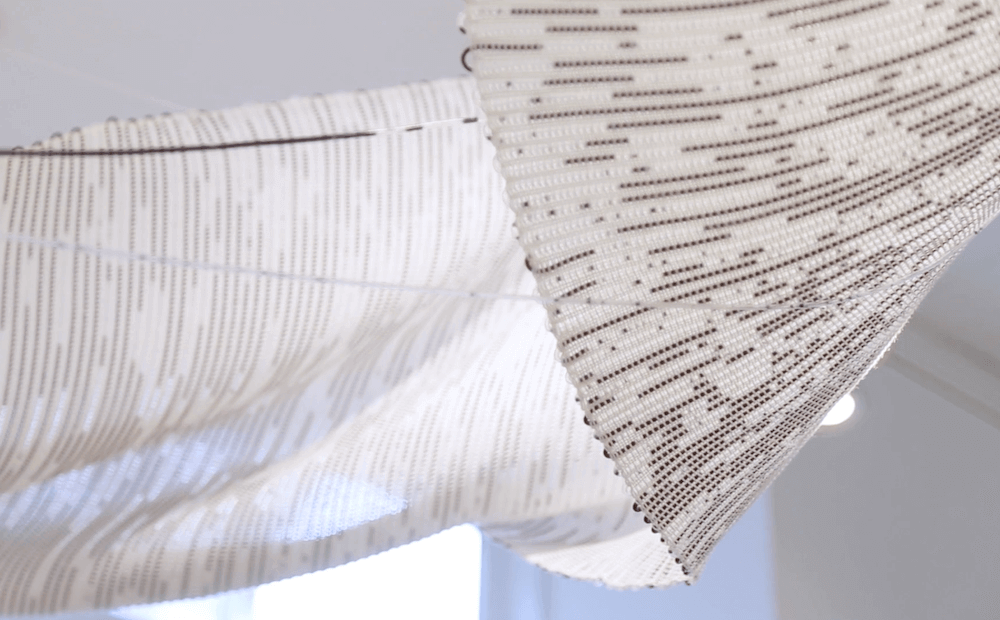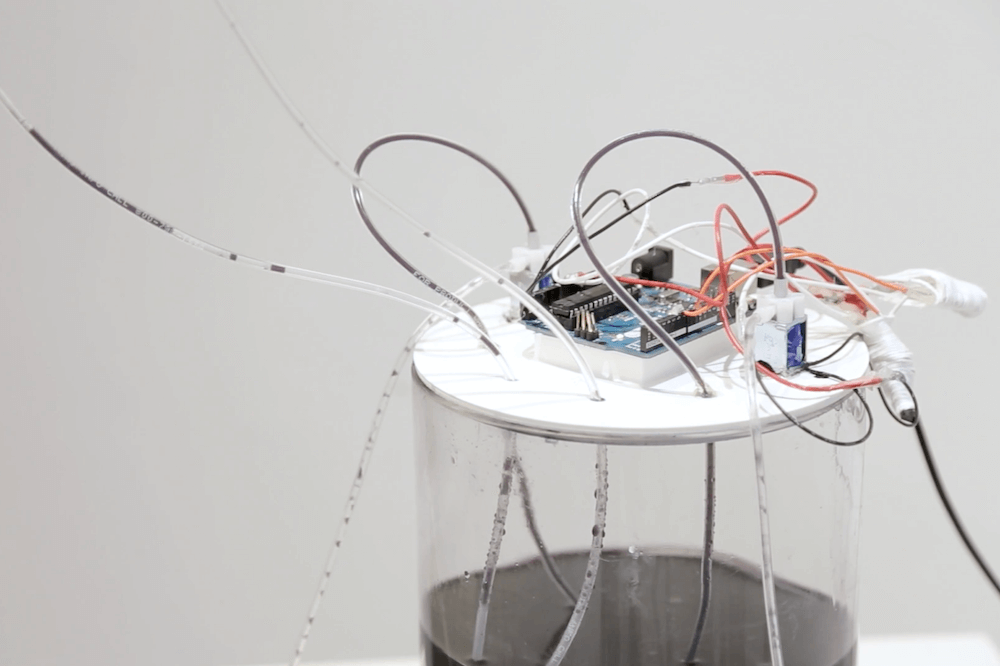Computer 1.0 explores the relationship between textile and technology

While you might have never considered the idea, looms—especially the punchcard-driven Jacquard loom, which helped inform both Ada Lovelace and Charles Babbage’s pioneering work—are an important part of computing history. As reported here, Victoria Manganiello and Julian Goldman have created an awe-inspiring ode to this computing heritage in the form of a handwoven tapestry that constantly changes the way it looks, aptly named “Computer 1.0.”
The tapestry, which was recently on display at the Museum of Arts and Design in New York City, stretches nine meters in length and features tubing woven throughout. An Arduino actuates pumps and valves to produce familiar patterns in this tubing with blue-dyed water and air.

These patterns soon become abstract and perhaps more open to interpretation, though with more development it’s noted that images and even smartphone-readable designs could be possible.
Be sure to see the short demo of this incredible installation in the video below!
A handwoven textile activated by computer code, Computer 1.0 explores connections between weaving and technology. For the project, Victoria Manganiello invited designer Julian Goldman to collaborate on designing and programming a pump controlled by Arduino microcomputers to move precise sequences of air and liquid through the approximately 2,000 feet of tubing woven through the cloth. The movement of the air and liquid evokes traditional weaving patterns such as bird’s eye, monk’s cloth, and twill. And the operating system—the computer and the pump—is not kept out of sight in the service of the woven screen and the pixelated patterns that run across it, but rather are an integral part of the work; nothing is hidden.
Manganiello’s textile reflects and expands on the obscured history of weaving and coding, calling attention to the “under-over, under-over” movement of thread becoming cloth that originally inspired the “zero-one-zero-one” of binary code. The jacquard loom of 1801, which used punch cards to program the movement of thread into increasingly complex woven patterns, is a direct, though frequently forgotten, ancestor of modern computers.
Leave a Reply
You must be logged in with your Arduino account to post a comment.